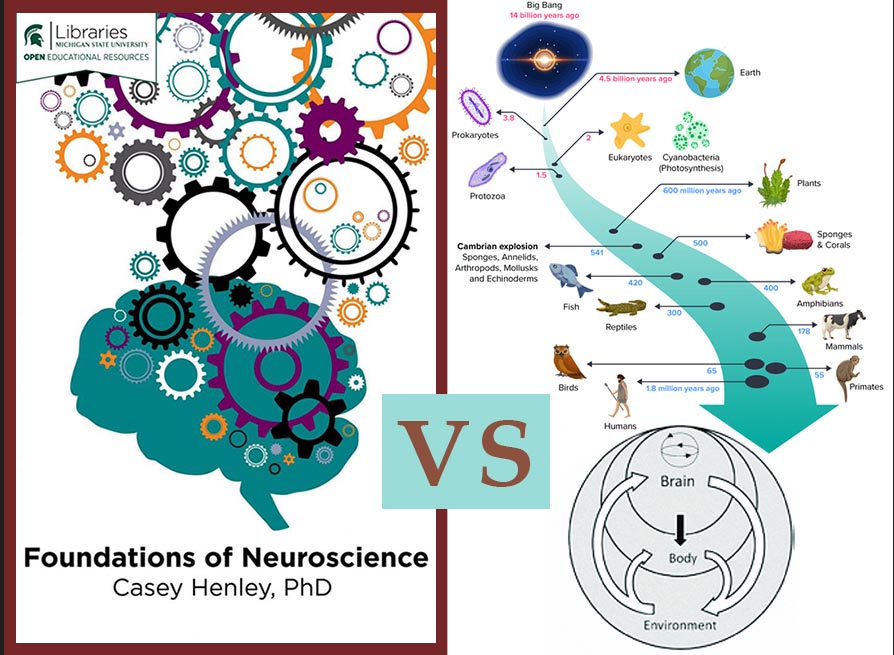Tuesday, 14 February 2023
Brain in pieces versus brain-body-environment resulting from a long evolutionary process

.
In 2021, Dr. Casey Henley, an assistant professor in the Department of Physiology at Michigan State University, published a free online book entitled Foundations of Neuroscience, intended for university undergraduate students. She deserves much credit for this initiative to make basic knowledge about neuroscience and the human brain available to this audience, as well as for the clarity of this book’s content and illustrations, which is exceptional for an introductory textbook in this field. This clarity carries over into the book’s overall structure, which follows a traditional model. It starts with chapters on the anatomy of the neuron, the ionic mechanisms of action potentials and the basics of synaptic integration. Next come chapters on the more general organization of the nervous system, including the various “sensory systems” and then the “motor system.” Lastly, there are chapters on “behaviour”, including phenomena such as motivation and reward, fear, stress and the behaviours associated with sexual differentiation.
Students will have no trouble navigating through this book, in which they can view and evaluate one chapter and then the next, piece by piece. But there lies the biggest problem with organizing a book in this way—pretty much like a repair manual for a car, which is perfect for figuring out which part is malfunctioning when the vehicle won’t start. But the human brain isn’t just a collection of parts, or even a collection of systems. Together with the human body, it forms an integrated whole, the product of the intricate workings of evolution over a tremendously long time. To illustrate this contrast, at the top of this post, I’ve placed the cover of Foundations of Neuroscience (showing a disembodied brain and a collection of gearwheels, as if designed by an engineer) alongside a diagram illustrating this long evolutionary timeline.
Here’s one example of what’s missing from this book. It does devote a chapter to the hypothalamic-pituitary-adrenal axis, with details about what happens in its component structures, how the hormone molecules released by each of them influence the others, the negative feedback of these hormones at all levels of the axis, and so on, along with a brief allusion to the negative health effects of chronic stress. But there’s nothing about how living systems respond to the imperative to stay alive, or how the mechanisms of fight and flight emerged in the course of evolution to encourage action and help us to save our skins, or, most importantly, why these mechanisms are still operating in the world of words and symbols that humans occupy today. In short, there is no evolutionary perspective to provide even the slightest understanding of why chronic activation of this axis occurs all too often in human societies and how it slowly but surely undermines human health.
Don’t get me wrong: I have nothing against this textbook in particular, especially since the author has been so generous as to publish it under a free Creative Commons licence. It’s just one recent example of hundreds of other textbooks that perpetuate this functionalist view of the body and brain as collections of separate parts. To get at least some understanding of the logic of life, readers would do well to ponder these words from a famous book with that title, by François Jacob, winner of the Nobel Prize in Physiology or Medicine:
“Today’s laboratories no longer attempt to determine what life is or to discern its contours. Instead, they devote all their effort to merely analyzing living systems, their structures, their functions, and their history.”
From the Simple to the Complex | Comments Closed







